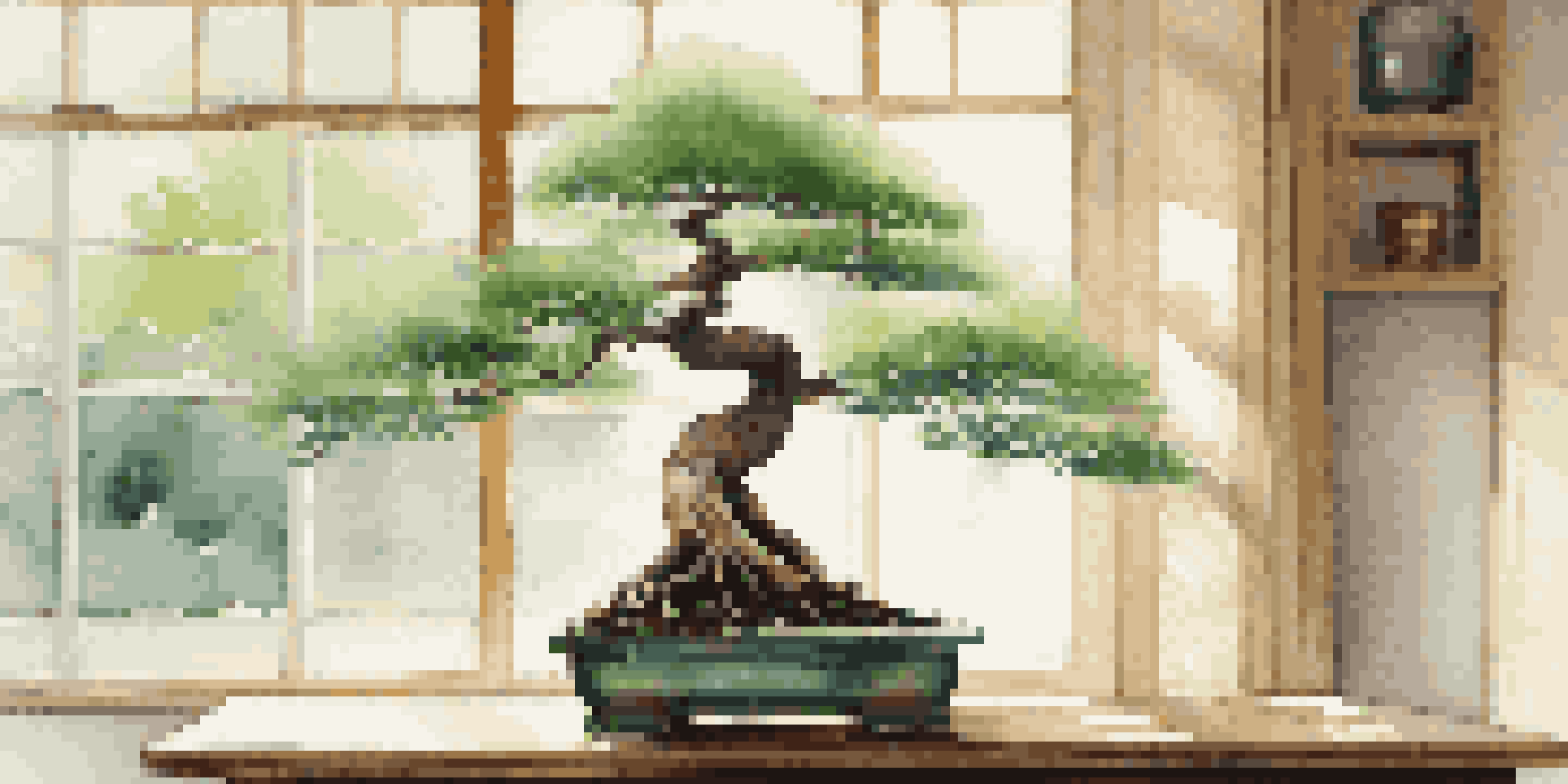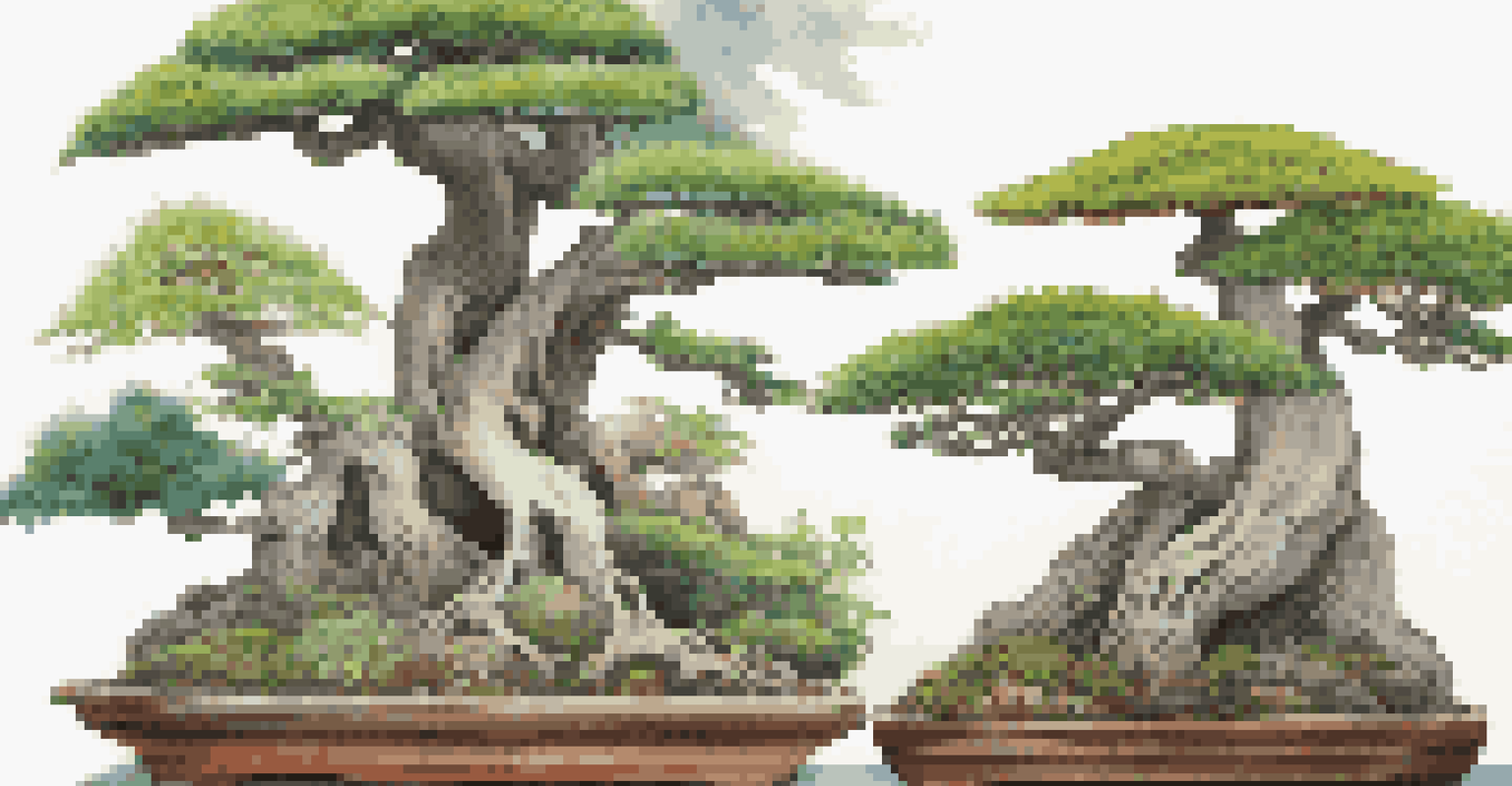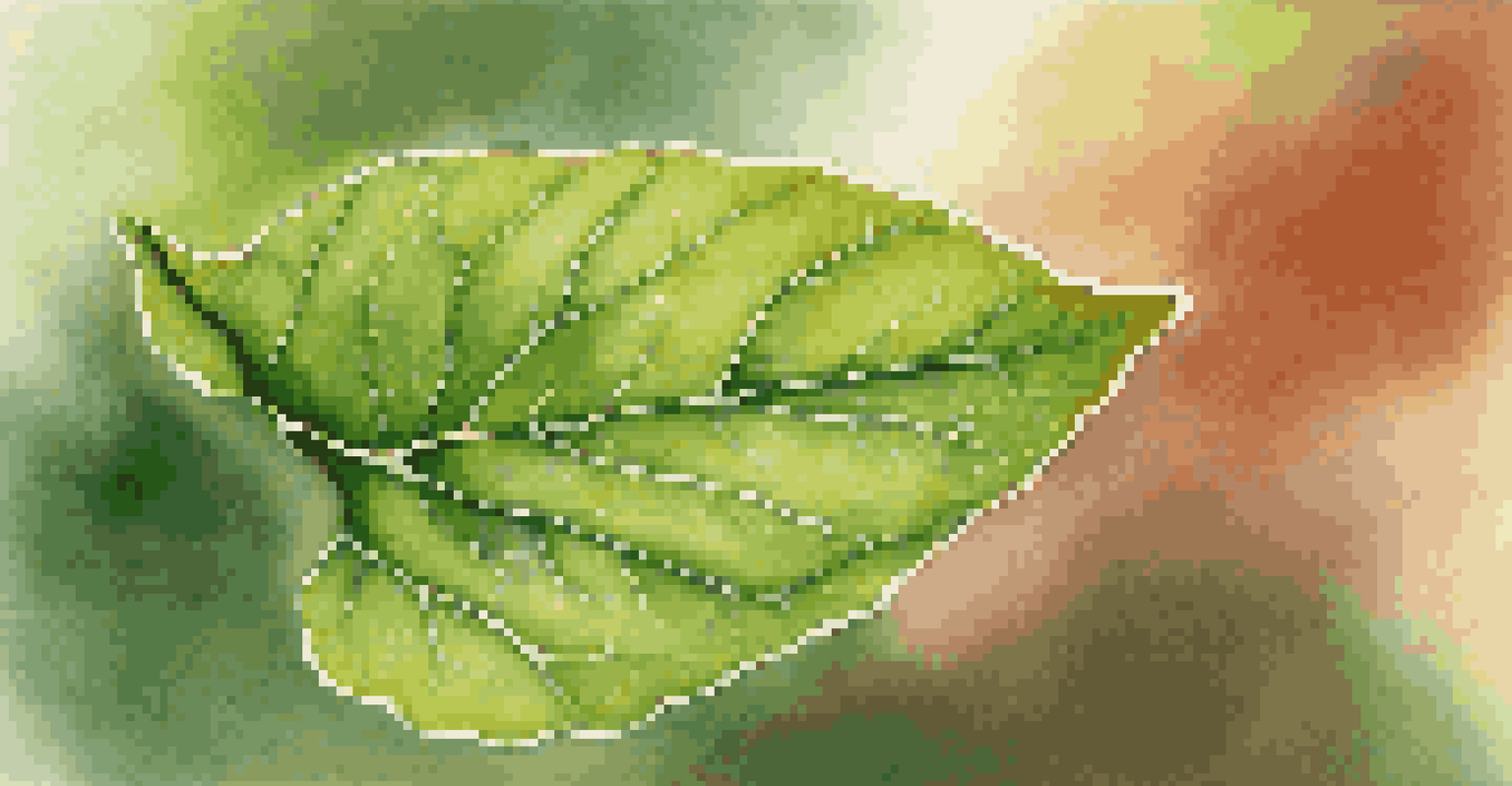Understanding Tree Anatomy: How It Affects Bonsai Care

The Basics of Tree Anatomy: A Quick Overview
To care for bonsai trees effectively, it's essential to understand their anatomy. Trees consist of various parts, including roots, trunk, branches, leaves, and even flowers or fruits. Each part plays a critical role in the tree's overall health and growth, which directly impacts how you care for your bonsai.
The best time to plant a tree was twenty years ago. The second best time is now.
For instance, the roots anchor the tree and absorb water and nutrients from the soil. The trunk serves as the main support system, allowing the tree to grow tall and wide. Understanding these basic components can help you make informed decisions when caring for your bonsai.
By knowing how each part functions, you can better address issues like pests, diseases, or nutrient deficiencies. This foundation will serve as a stepping stone for more advanced bonsai care techniques.
Roots: The Foundation of Your Bonsai Tree
Roots are often the unsung heroes of the plant world, but they are crucial for bonsai health. They not only anchor the tree but also absorb water and nutrients essential for growth. A well-developed root system allows your bonsai to thrive, while a poor or damaged root structure can lead to serious health problems.

When caring for bonsai, regular root pruning is essential to promote healthy growth and maintain the tree's size. By trimming the roots, you encourage new growth and prevent the tree from becoming root-bound in its pot. This practice ensures that the tree remains healthy and continues to thrive.
Understanding Tree Anatomy Matters
Knowing the anatomy of your bonsai tree, from roots to leaves, is crucial for effective care and addressing potential health issues.
Additionally, understanding the type of soil that best supports root health can make a significant difference. A mix of organic and inorganic materials can promote aeration and drainage, allowing roots to breathe and absorb nutrients effectively.
Trunk Structure: The Tree’s Support System
The trunk of a bonsai tree is not just a support structure; it also stores nutrients and water, making it vital for the tree's health. A healthy trunk allows the tree to withstand environmental stresses and provides a canvas for creative styling. When selecting a bonsai, pay attention to the trunk's thickness and texture as it can indicate the tree's age and health.
Nature does not hurry, yet everything is accomplished.
In bonsai care, trunk training techniques, such as wiring and pruning, help shape the tree's appearance. It's not just about aesthetics; shaping the trunk encourages balanced growth and can even improve the tree's structural integrity. This aspect of care requires patience and skill, but the results can be stunning.
Understanding trunk anatomy also helps in diagnosing issues. For example, if you notice cracks or wounds, it may indicate that the tree is under stress, requiring immediate attention.
Branches: The Tree's Canopy and Aesthetic Appeal
Branches are essential for creating the overall shape and style of your bonsai tree. They not only contribute to the tree's aesthetics but also play a role in photosynthesis by supporting leaves. Healthy branches ensure that your bonsai has a balanced structure and can effectively capture sunlight.
Regular pruning of branches is necessary to maintain the desired shape and encourage new growth. If branches become too dense, they can block light from reaching lower leaves, leading to uneven growth. It's essential to strike a balance between having enough foliage for photosynthesis while maintaining an attractive shape.
Roots Are Essential for Health
A well-developed root system is vital for nutrient absorption and growth, making regular root pruning and proper soil choice important.
Wiring techniques can also be applied to branches for training and shaping. This practice requires care and attention to avoid damaging the bark, but when done correctly, it can lead to beautiful, flowing lines that enhance your bonsai's visual appeal.
Leaves: The Photosynthesis Powerhouses
Leaves are often referred to as the lungs of the tree, as they play a crucial role in photosynthesis—the process that converts sunlight into energy. Healthy leaves are vital for your bonsai's growth and overall vitality, as they produce the energy the tree needs to thrive. Observing leaf color and size can give you insight into your tree's health.
In bonsai care, leaf pruning is a common practice to promote smaller leaves and a more compact appearance. This technique not only enhances the aesthetic appeal but also encourages the tree to direct energy to new growth, ensuring a fuller canopy. Regularly inspecting leaves can also help you catch any signs of pests or diseases early.
Understanding the role of leaves can help you make better choices about lighting and watering. For instance, if your bonsai is not receiving enough light, you may notice leaves turning yellow or dropping off. Adjusting its location or light exposure can significantly improve its health.
Flowers and Fruits: The Bonsai's Final Touch
Many bonsai trees produce flowers and fruits, which can add an extra layer of beauty to your tree. These elements not only enhance the visual appeal but also indicate the tree's maturity and health. However, not all bonsai enthusiasts prioritize these features, as some prefer to focus on the tree's shape and structure.
If you wish to encourage flowering or fruiting, it's essential to understand the specific needs of your bonsai species. Different trees have varying requirements for sunlight, watering, and nutrients, which can all affect their ability to bloom. Ensuring that your bonsai receives adequate care will increase the chances of it flowering.
Regular Maintenance Enhances Growth
Practices like pruning branches and leaves not only improve the tree's aesthetic appeal but also promote healthy, balanced growth.
Additionally, once flowers or fruits appear, they require special attention. For example, overripe fruits can attract pests, so timely harvesting is crucial. Balancing the aesthetic appeal of flowers and fruits with the overall health of the bonsai is key to successful care.
Putting It All Together: Comprehensive Bonsai Care
Caring for a bonsai tree involves a holistic understanding of its anatomy. Each part, from roots to leaves, plays a unique role in the tree's health and visual appeal. By grasping these concepts, you can create a care routine tailored to your bonsai's specific needs.
Regular observation is essential in bonsai care. By paying attention to changes in each part of the tree, you can address potential issues before they escalate. For example, if you notice wilting leaves, it may indicate a watering issue that needs immediate attention.

In conclusion, a deep understanding of tree anatomy not only enhances your bonsai care experience but also fosters a greater appreciation for these beautiful living artworks. With patience, observation, and care, your bonsai can thrive and become a stunning centerpiece in your home.